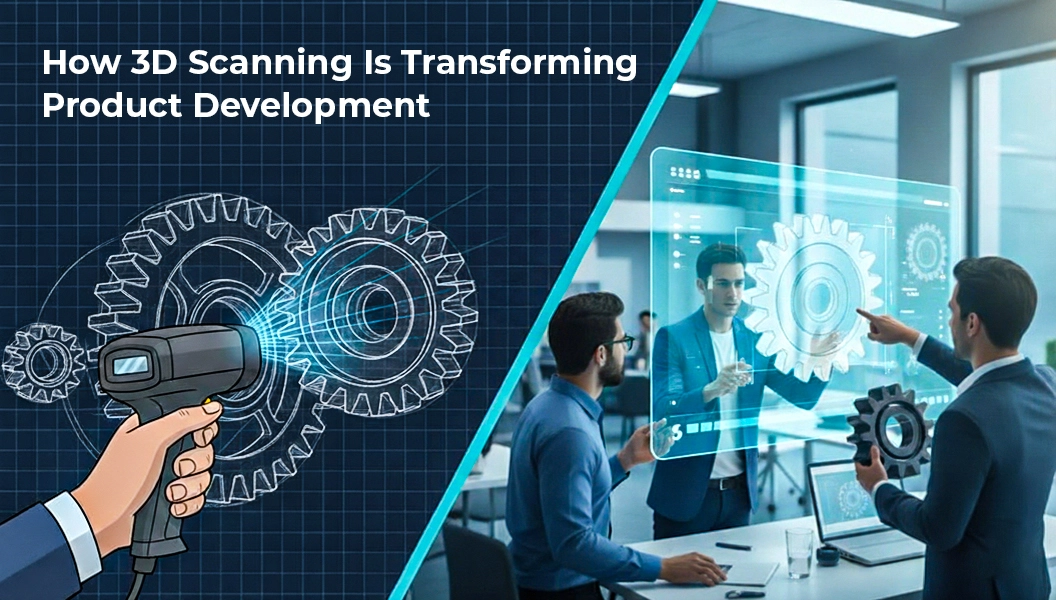- Home
- About Us
-
Training
▼
- Graphics Design
- 3D Animation & VFX
- UI & UX Design
- Interior Design | Architecture
- Civil Engineering
- Mechanical Engineering
- CNC & CAM Engineering
- Mould Design Engineering
- Art CAM Design Engineering
- Electrical Engineering
- Automobile Electric Automation Engineering
- Computer Aided Design Course Content
- Computer Aided Engineering
- Aeronautical Engineering
- Advance Program In MEP
- Advance Program In Composition and Editing
- 3D Scan Reverse Engineering In Product Design
- Gallary ▼
- Blog
- Inquiry

How 3D Scanning is Transforming Product Development
Introduction
The journey from concept to product is evolving rapidly. Traditional design methods relied heavily on manual measurements, sketches, and multiple prototypes. But today, 3D scanning technology is transforming product development by offering speed, precision, and innovation. Engineers, designers, and manufacturers can now create highly accurate digital models of physical objects — unlocking new opportunities for industries ranging from automotive to healthcare.
For students enrolled in an engineering design course in Ahmedabad or aspiring to join the best design institute in Ahmedabad, mastering 3D scanning tools is becoming as important as CAD and simulation software.
What is 3D Scanning?
3D scanning captures the exact geometry of a real-world object using lasers, structured light, or photogrammetry. The result is a digital 3D model, often referred to as a point cloud or mesh, which can then be refined in CAD software for analysis, reverse engineering, or manufacturing.
This process bridges the gap between physical objects and virtual design, making it a critical tool in modern product development.
Ways 3D Scanning is Transforming Product Development
1. Faster Prototyping
2. Reverse Engineering
3. Improved Accuracy and Quality Control
4. Enhancing Creativity and Innovation
By digitizing real-world objects, designers can experiment with forms and shapes that might otherwise be too complex to measure manually. For students taking a 3D animation course in Ahmedabad, 3D scanning adds realism to projects, whether in gaming, films, or virtual product presentations.
5. Cost Savings in Production
Applications Across Industries
- Automotive & Aerospace: For design validation, part inspection, and creating custom components.
- Healthcare: Used to design prosthetics, dental implants, and surgical models with perfect fit.
- Manufacturing: Enables predictive maintenance and reverse engineering of machine parts.
- Education & Training: Institutes offering engineering design courses in Ahmedabad integrate 3D scanning into their curriculum to prepare students for real-world challenges.
- Entertainment: In 2D and 3D animation courses, scanning is used to create lifelike characters and environments for films, games, and VFX.
Why Students Should Learn 3D Scanning
For aspiring engineers and designers, mastering 3D scanning offers a competitive edge. At the best design institute in Ahmedabad, students gain hands-on training in advanced tools like scanners, CAD integration, and simulation. Combined with skills in ANSYS engineering simulation software or Adobe Photoshop and Illustrator training, this knowledge creates multi-skilled professionals who are in demand across industries.
Conclusion
3D scanning is more than just a technological upgrade — it’s a revolution in how products are conceived, developed, and brought to market. By improving speed, accuracy, and creativity, it is redefining industries and career opportunities alike.
For students seeking future-ready skills, enrolling in an engineering design course in Ahmedabad or a 3D animation course in Ahmedabad that includes 3D scanning modules is a smart investment. As industries continue to innovate, those who master this technology will play a central role in shaping the future of product development.
